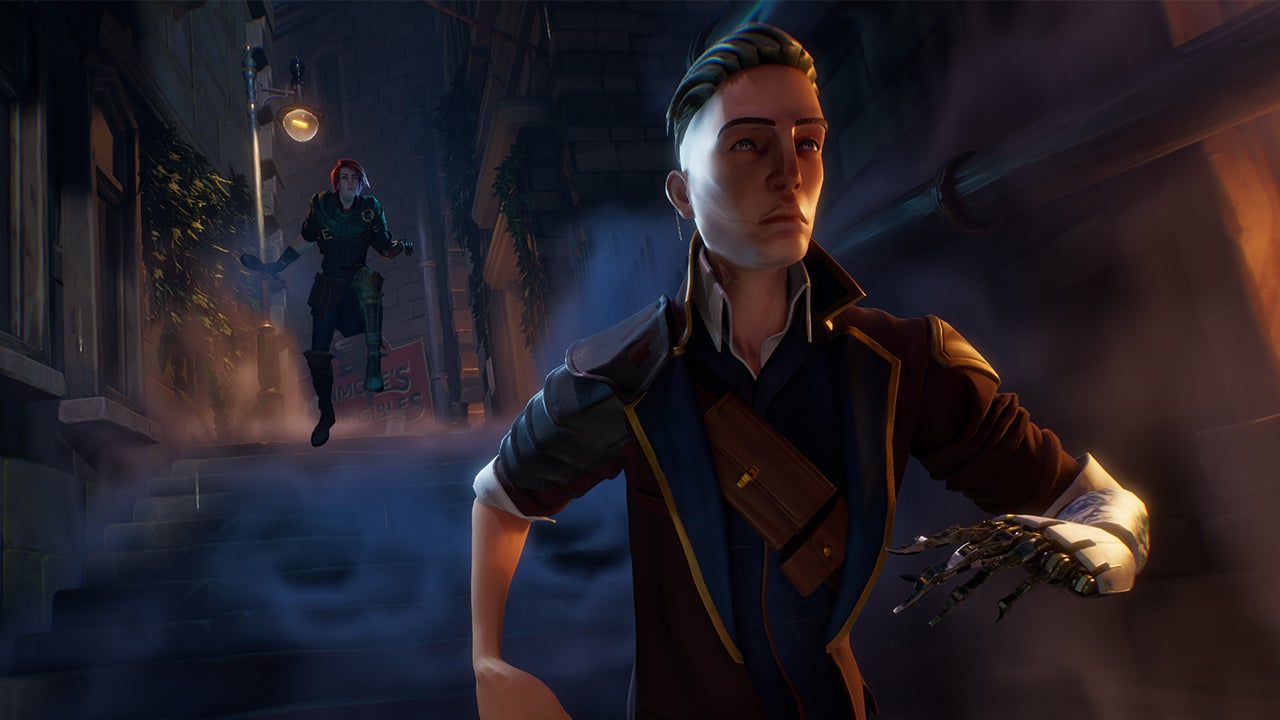Game design legend Warren Spector is known for pioneering the “immersive sim” genre – most famously the original Deus Ex, with Ultima Underworld paving the way prior to that – but now he wants to modernize it in a way he’s never tried before: multiplayer. The result is Thick as Thieves, a four-player, session-based PvPvE stealth-action game that harkens back to the original 1998 single-player stealth classic Thief: The Dark Project while adding elements (like cross-play across PC and consoles, for example) that modern audiences expect.
“We wanted to create a game that was stealth-action, and not just stealth with slower pacing, ” Spector explained. The Austin-development-scene fixture is joined by fellow industry veteran Greg LoPiccolo, game director on Looking Glass’s first seminal Thief, along with a team of much younger developers led by lead designer David McDonough. “It’s a thief vs. thief game, or a contest of craftiness,” McDonough said. “What if your opponents weren’t just guards and traps?”
The world isn’t based on Thief, but it’ll look familiar to fans of that franchise in that it’s based on an alternate history early-modern metropolis inspired by the northern region of the UK. It also mixes technology and magic. Factions and NPCs are locked into power struggles here, and thieves (i.e. players) can align with or against these forces. When you jump into a match, you choose one of four character archetypes – Spector and the team at Otherside Entertainment were reluctant to call them classes – and can pick up any benefits earned through the higher-level meta game. This should be stuff like cosmetics, but could also be things like skills. Each archetype has different loadouts and abilities, like the Spider, who has a Zipwire (i.e. grappling gun) to quickly get up to rooftops, but it has to be painstakingly rewound after each use to prevent Spider players from darting all over the map like, well, Spider-Man.
You’re all hunting for loot – both the small-time stuff scattered around the map, as well as the main prize of each session. You can set traps for other players with your gadgets or ambush them to try and get theirs. For instance, running leaves footprints that each thief (being, in essence, a tracker) can see. But you can leave false trails or lead foes into scenarios where they naively think they have the upper hand. You can drop loot off at stashes dotted around the map in order to free up room in your inventory to steal even more loot. Naturally, there are myriad ways in and out of every area, allowing you to take to the rooftops, sewers or streets – the latter of which is a safe space where the guards won’t come after you unless you do something to provoke them.
After watching about five minutes of early gameplay, it’s clear that Thick as Thieves is much faster-paced than the intentionally plodding Thief from yesteryear. But even with the infusion of speed and action, it’s still very much a stealth game. Both a “loud” thief who takes it right to their targets and a ghost thief whose goal is to stick to the shadows and never be seen can exist – and succeed – in this game.
Finally, as a slight aside: With Thick as Thieves and Remedy’s FBC: Firebreak as two recently announced examples, I for one hope the industry is starting to reject the time-sucking, studio-destroying live-service game and instead return to a simpler time of session-based multiplayer games that don’t require you to play them so regularly in order to keep up with the community that they might as well be a second job. Thick as Thieves, for its part, is still a long way off – the Otherside Entertainment team said to expect it in 2026 – but it could be a welcome breath of nostalgia-scented fresh air for the first-person multiplayer space once it finally arrives.















